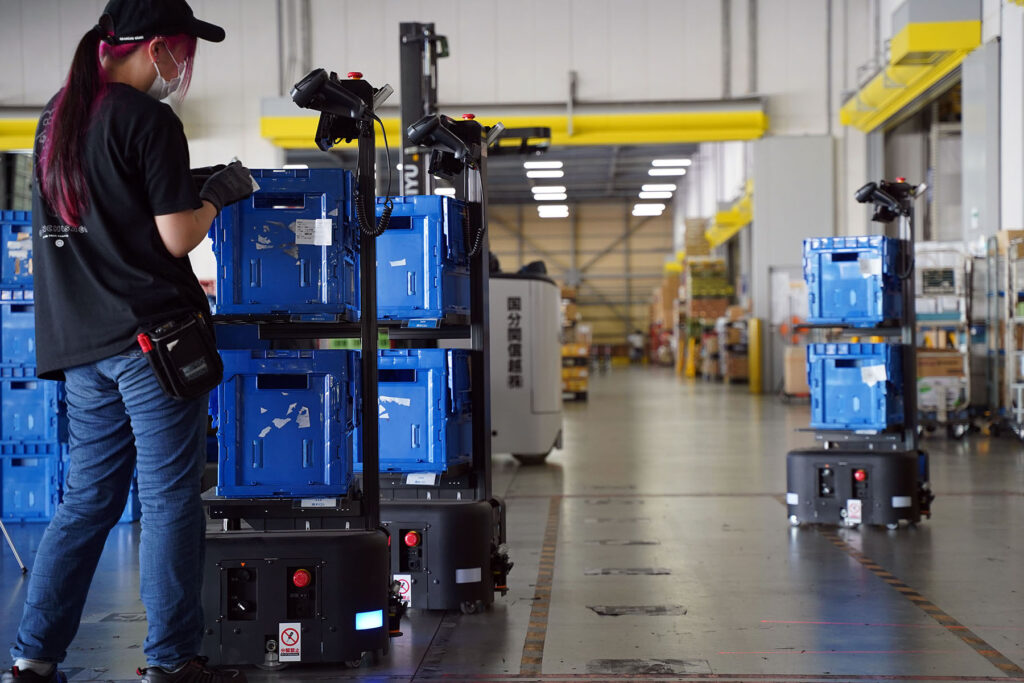Optimizing Picking Efficiency in a Food Wholesale Distribution Center with Secure Operation of Rapyuta PA-AMR Amidst Forklift Operations.
For those exploring the use of collaborative robots to enhance warehouse logistics, real-world case studies from organizations that have already undertaken such implementations can provide crucial insights. In this article, we will delve into the practical application of Rapyuta PA-AMR, highlighting its actual effects through detailed interviews with the involved personnel.
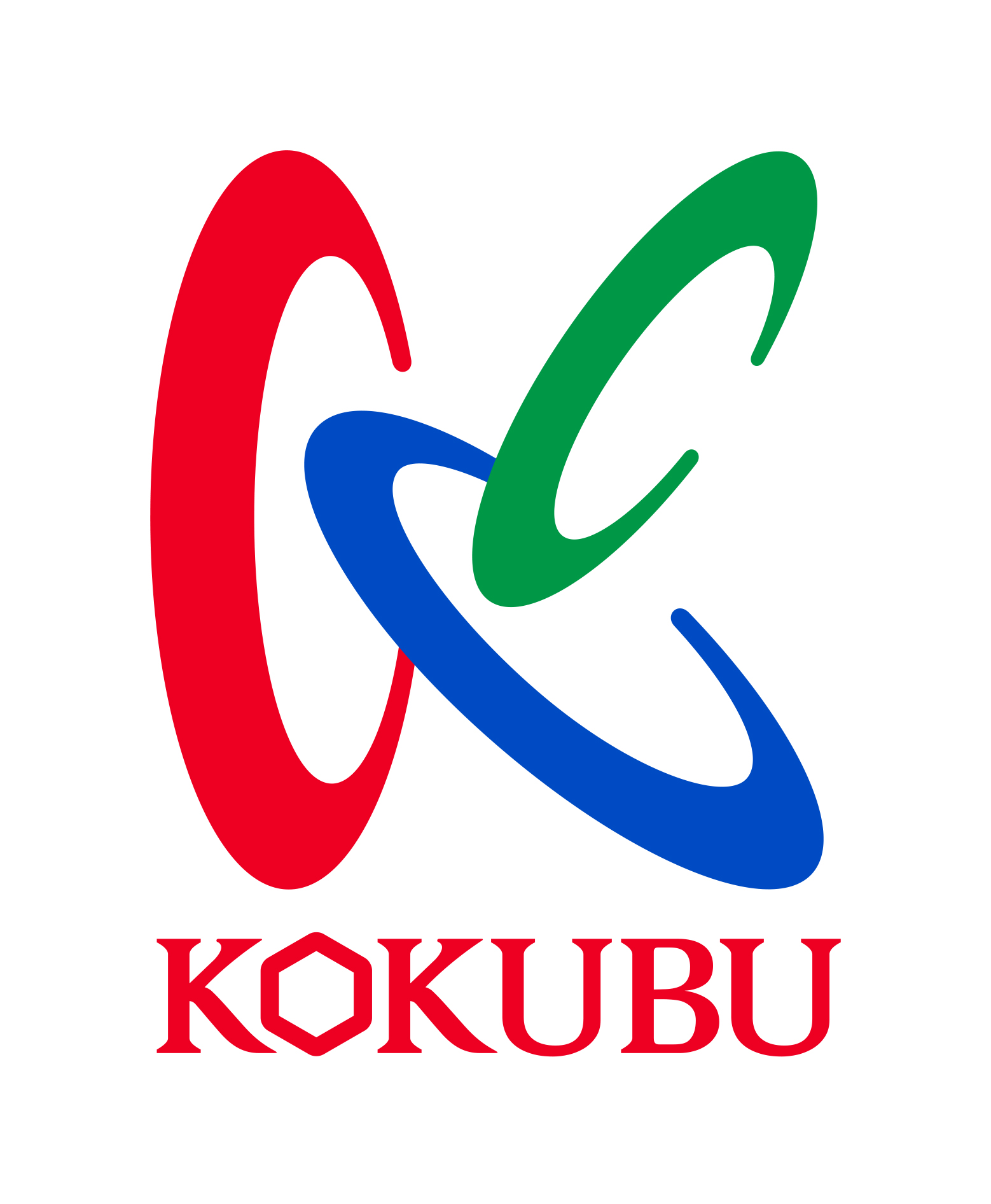
KOKUBU KANTO-SHINETSU CORP.
Ibaraki Comprehensive Center
Industry: Food Wholesale
Number of Units installed: 10 units
AMR Operation Date: January 2023 –
The recent deployment of Rapyuta PA-AMR at the Ibaraki Center of Kokubu Kanto Shinetsu Co., Ltd. marks a significant step in logistics innovation. The center, established in August 2015, manages a diverse inventory of approximately 10,000 items including food, alcoholic beverages, and confectionery. These products are stored across three temperature zones—ambient, refrigerated, and frozen—with the Rapyuta PA-AMR system being implemented within a 4,200 square meter section of the ambient storage area.
Serving a broad client base, from major supermarkets to local liquor stores, the center confronts unique challenges related to varying delivery formats and lead times from its trading partners, complicating the automation process. Additionally, balancing supply with demand and optimizing staffing levels presents ongoing operational challenges.
Within this environment, the integration of ten Rapyuta PA-AMRs has led to significant performance improvements, observed eight months after the initial implementation. We conducted interviews with two key representatives involved in the deployment, who shared insights into the background, the challenges faced, and the noteworthy achievements of the Rapyuta PA-AMR deployment.
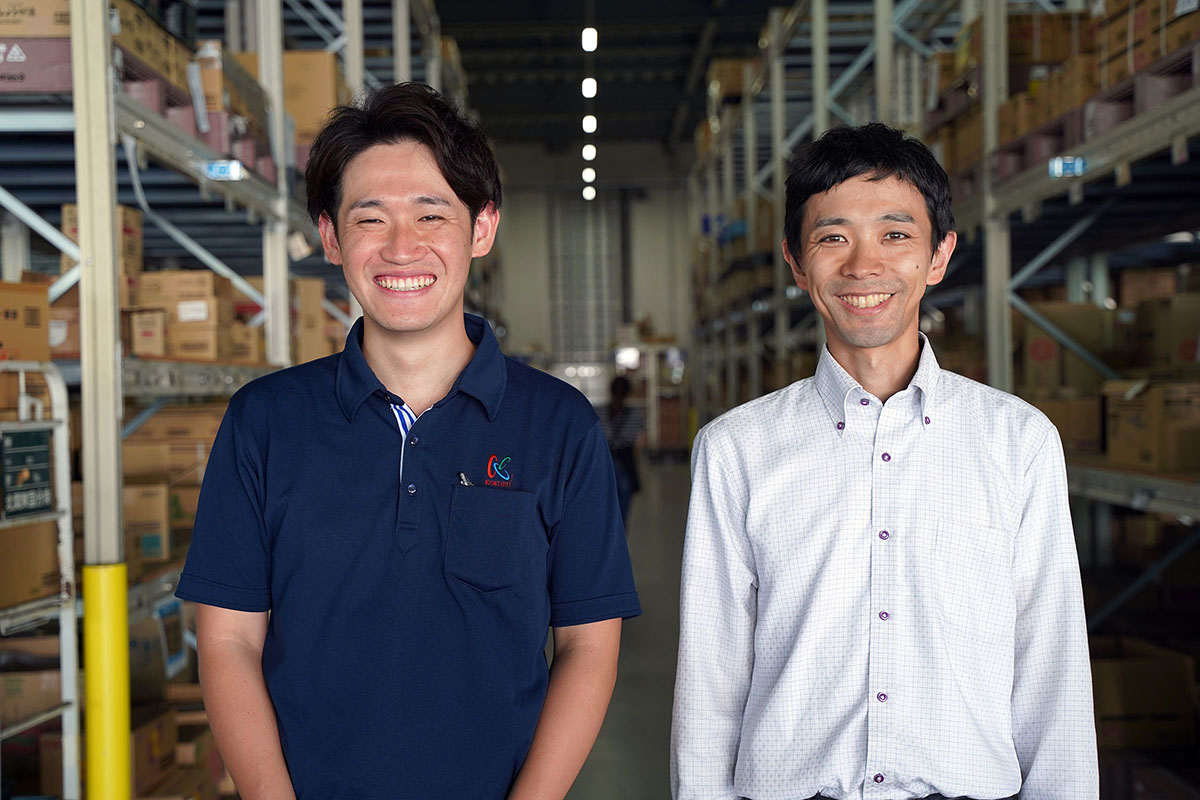
Haruka Hinako (pictured on the right)
Logistics Division, Kokubu Group Corp.
Ayumu Hoshi (pictured on the left)
Logistics and Systems Division, Kokubu Kanto-Shinetsu Corp.
Index
- Characteristics of the logistics center
- Background of considering a logistics robot (Rapyuta PA-AMR)
- Reasons and process of introducing Rapyuta PA-AMR
- Traditional picking method
- Unique requirements requested at the time of implementation
- Changes and adjustments made in the field during the introduction of Rapyuta PA-AMR
- System integration with WMS
- On-site reactions
- Staff training
- Unique efforts made during the operation of the system
- Comparison of productivity before and after the introduction of Rapyuta PA-AMR
- Rapyuta’s support system
- Challenges faced with AMR during operations
- Three aspects of warehouse environments ideal for AMR utilization
- Expansion of Rapyuta PA-AMR implementation to other locations
Q. Could you please tell us about the main products handled at this center and any unique features of its operation?
This logistics center, launched in August 2015, caters to a food wholesale business dealing with products spanning three temperature zones: ambient, refrigerated, and frozen. Within the approximately 6,000 square meters of the entire center, the area covered by Rapyuta PA-AMR accounts for about 1,800 square meters within the 4,200 square meter ambient temperature center. The ambient temperature center handles approximately 10,000 items, including food, beverages, and confectionery, delivering to various clients ranging from major supermarkets to local liquor stores.
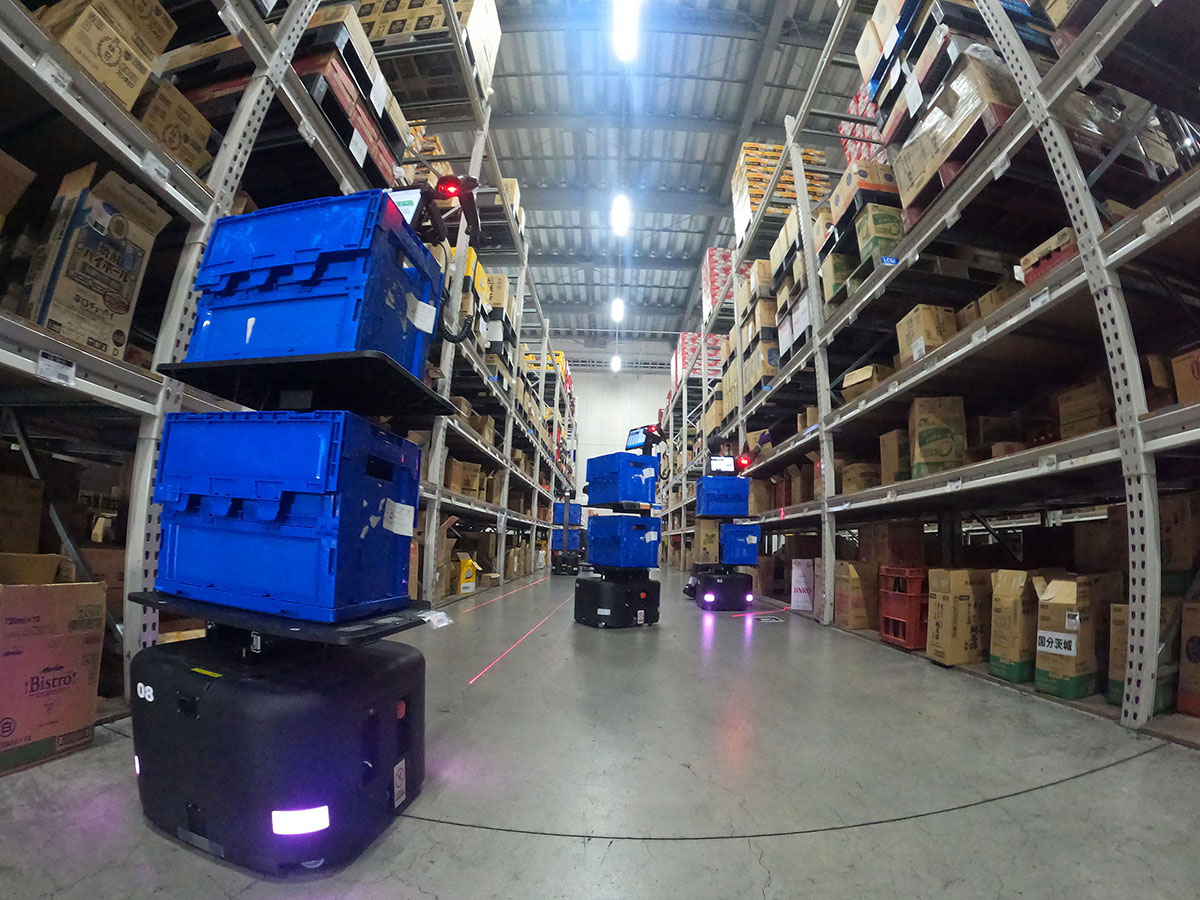
Q. Could you please explain the background behind your company’s consideration of introducing automated equipment for logistics operations?
The shortage of manpower is a pressing issue across the industry, and it’s particularly acute in the Ishioka area where our logistics center is located. Since around 2019, this region has been experiencing a significant shortage of manpower, which has already started to impact our day-to-day operations. However, despite these challenges, it’s crucial for us to ensure the continuity of our logistics operations. Therefore, we began exploring actions for future streamlining and efficiency, which led us to consider the integration of automation.
Q. What were the options considered to address the challenges, and what were the key requirements that became essential?
Initially, when considering automation from the perspective of maintaining and sustaining logistics operations in the wholesale industry, we explored solutions such as large-scale automated warehouses. However, we concluded that implementing such large facilities would be difficult due to the high initial costs and the need to halt operations for extended periods during machinery installation. Additionally, in our case, frequent changes in handled items and clients, as well as frequent consolidations and closures of facilities, made it challenging to introduce large fixed equipment that would be difficult to relocate. Therefore, the requirement for easy expansion and mobility was also necessary.
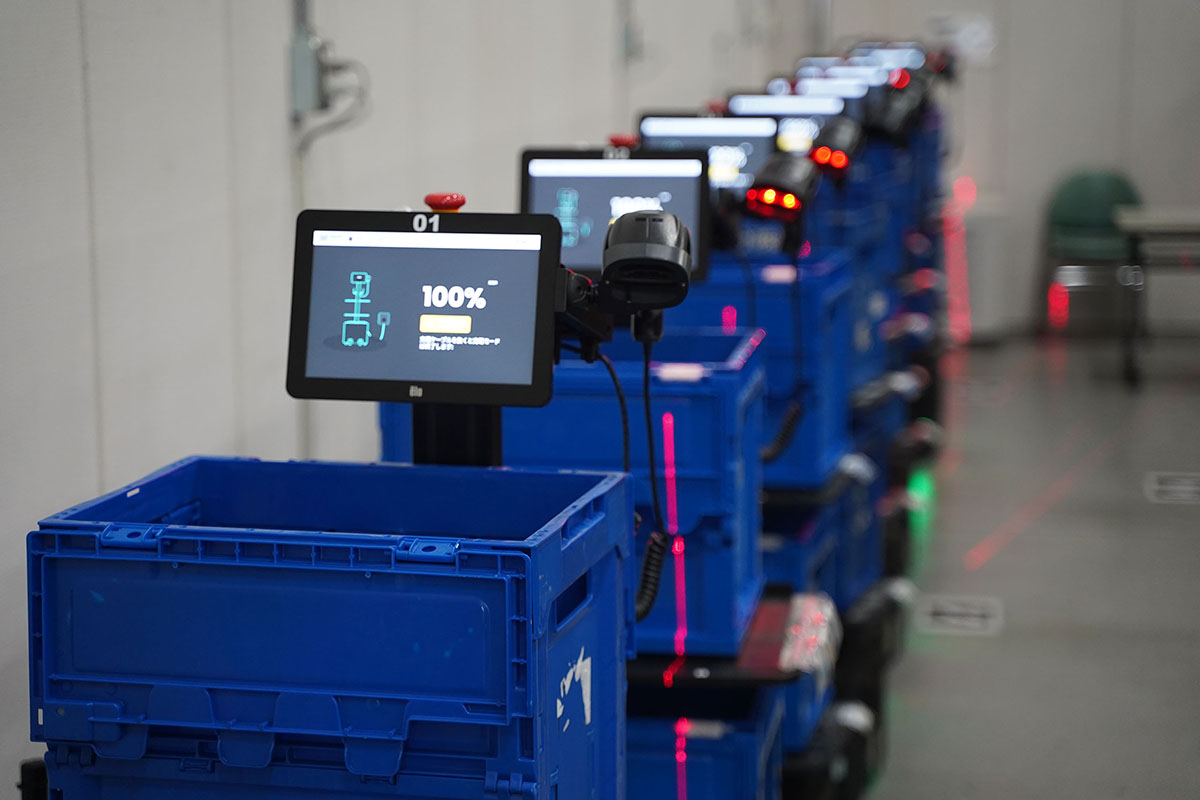
Q. When it became apparent what requirements were necessary for streamlining processes, could you elaborate on the decision-making process that led to the adoption of Rapyuta PA-AMR?
Upon analyzing the time spent on picking tasks at our logistics center, it became evident that walking accounted for a significant portion of the overall time. Therefore, the key consideration for automation was how to minimize walking time and streamline efficiency. At our logistics center, we handle shipments tailored to various types of customers, each with specific orders. It is notable that we primarily deal with individual items (piece picking) rather than bulk orders (case picking). Analysis revealed that a considerable amount of manpower and time were dedicated to piece picking, resulting in increased walking time and workload. Given these challenges, the logical step was to consider collaborative solutions like Rapyuta PA-AMR.
Another point is that Rapyuta PA-AMR can be operated by anyone with minimal training. Given the current labor shortage situation, it’s necessary to hire diverse talent, including seniors and foreigners. Additionally, the training period must be shortened so that the system can be put into practical use within a short timeframe. It was important to us that Rapyuta PA-AMR is easy to operate and requires only a short training period.

Q. Please share with us the background and reasons behind the decision to ultimately choose Rapyuta Robotics’ AMR?
In 2019, there were only about three vendors in Japan offering AMR solutions. As we gathered information, it became evident that our B2B-focused business required an AMR capable of accommodating 50-liter containers. While many AMRs at the time were tailored for B2C EC warehouses, Rapyuta Robotics stood out for its compatibility with B2B requirements, including software aspects. Reviewing past implementations and visiting the actual logistics center of Kanto Distribution Warehouse, which operated in the B2B sector, provided us with a clear vision of the implementation process and strongly supported our decision to opt for Rapyuta Robotics’ AMR.
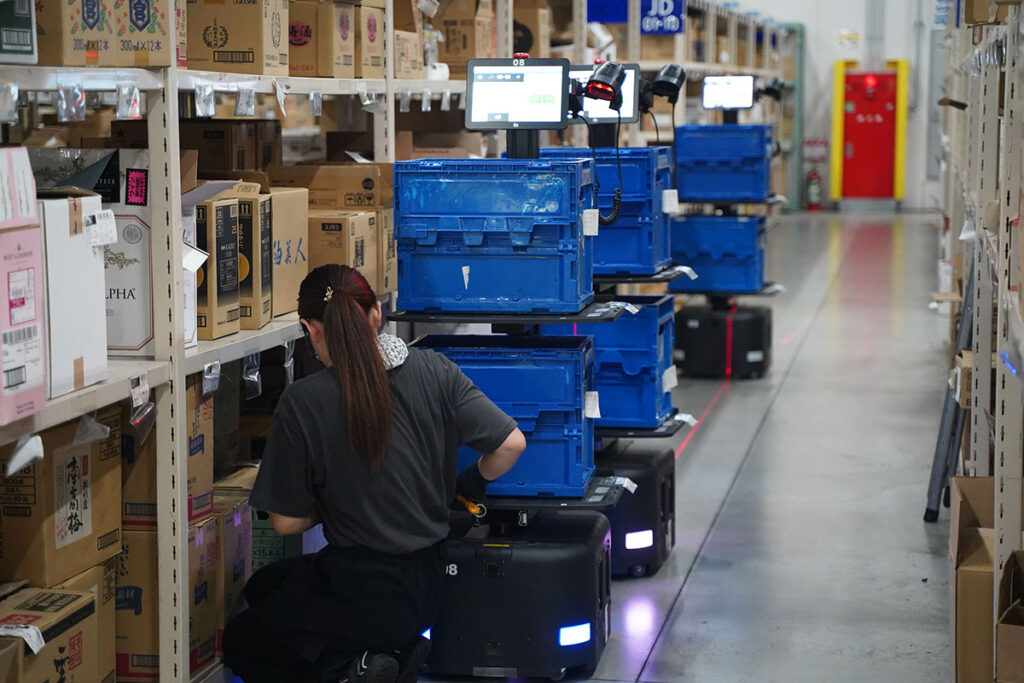
Q. Could you please provide details on when you began exploring the possibility of implementing AMRs and when the decision to proceed was made?
After narrowing down our options to Rapyuta Robotics for B2B-oriented AMR, we engaged in close communication with the implementation team to solidify our operational vision. However, in 2021, some technical customizations were necessary to accommodate the needs of our wholesale logistics center. For instance, in areas where pallet racks and lower racks were mixed, challenges arose with AMR errors in self-positioning and location measurement. Yet, with the introduction of AR markers in 2022, we witnessed a significant improvement in the precision of AMR behavior, effectively addressing these initial concerns. Although we began considering AMR implementation around early 2020, it took approximately two years for the technology to align with the environmental conditions of our wholesale logistics center. We then made the official decision to introduce the system through an internal approval process, and after repeated testing between August and November 2022, the system went into full operation in January 2023.
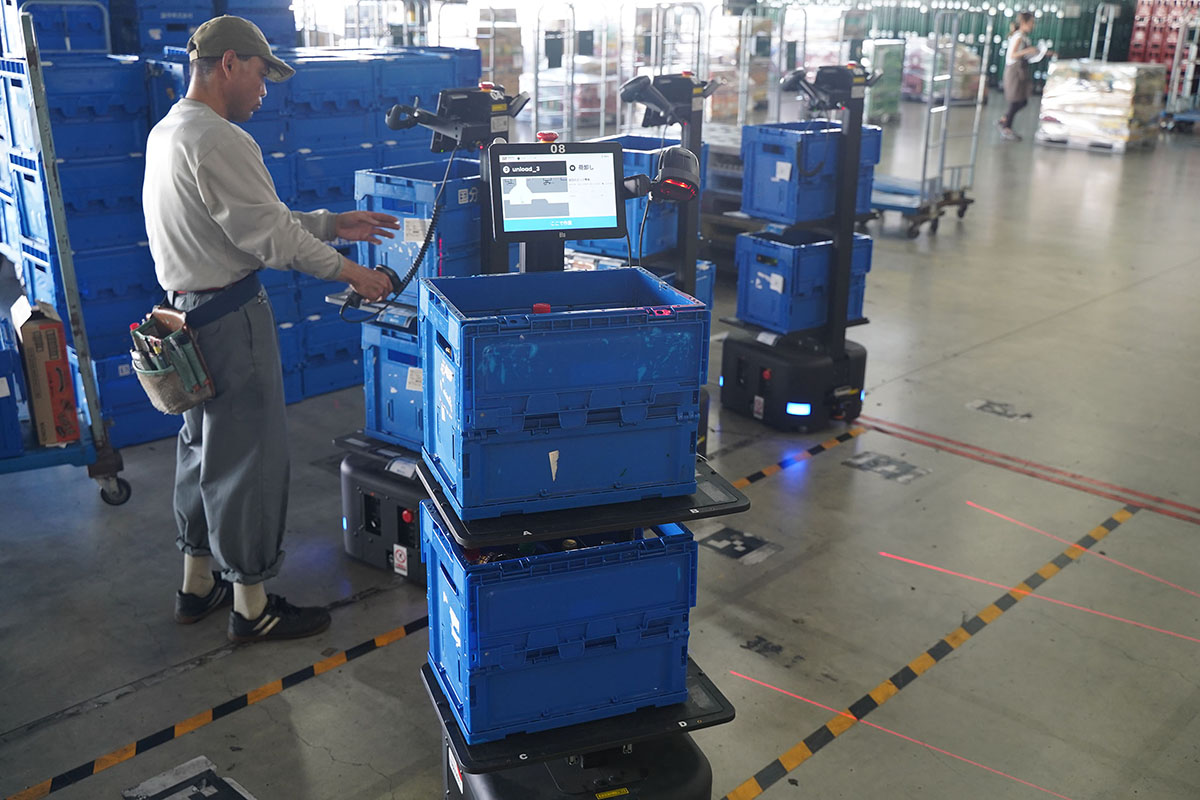
Q. How was picking traditionally conducted at your center?
Initially, we followed a conventional approach using handheld terminals and six-wheel cart trucks to fulfill orders, organized by individual stores. However, with the introduction of AMRs, our picking process underwent a significant transformation. Now, except for large-case items like beverages, we primarily rely on AMRs for efficient and tailored picking based on cargo specifications.
Q. Did your company have any specific requests or unique needs during the preparation for implementing Rapyuta PA-AMR?
For the most part, we relied on the basic functionalities of Rapyuta PA-AMR, so there weren’t any significant customizations needed. However, we did request the functionality to generate individual labels containing store names. While Rapyuta PA-AMR’s standard features allow for picking details to be issued in a list format, for delivering to various customers individually, it’s more efficient to print store information on labels instead of lists. Affixing these labels to containers allowed for streamlined operations.
In our case, we separate deliveries for each destination per container and often need to distribute to multiple destinations using a single vehicle. Having picking details separated for each container enables us to clearly identify orders for each store, facilitating efficient picking using a single AMR for multiple store orders.
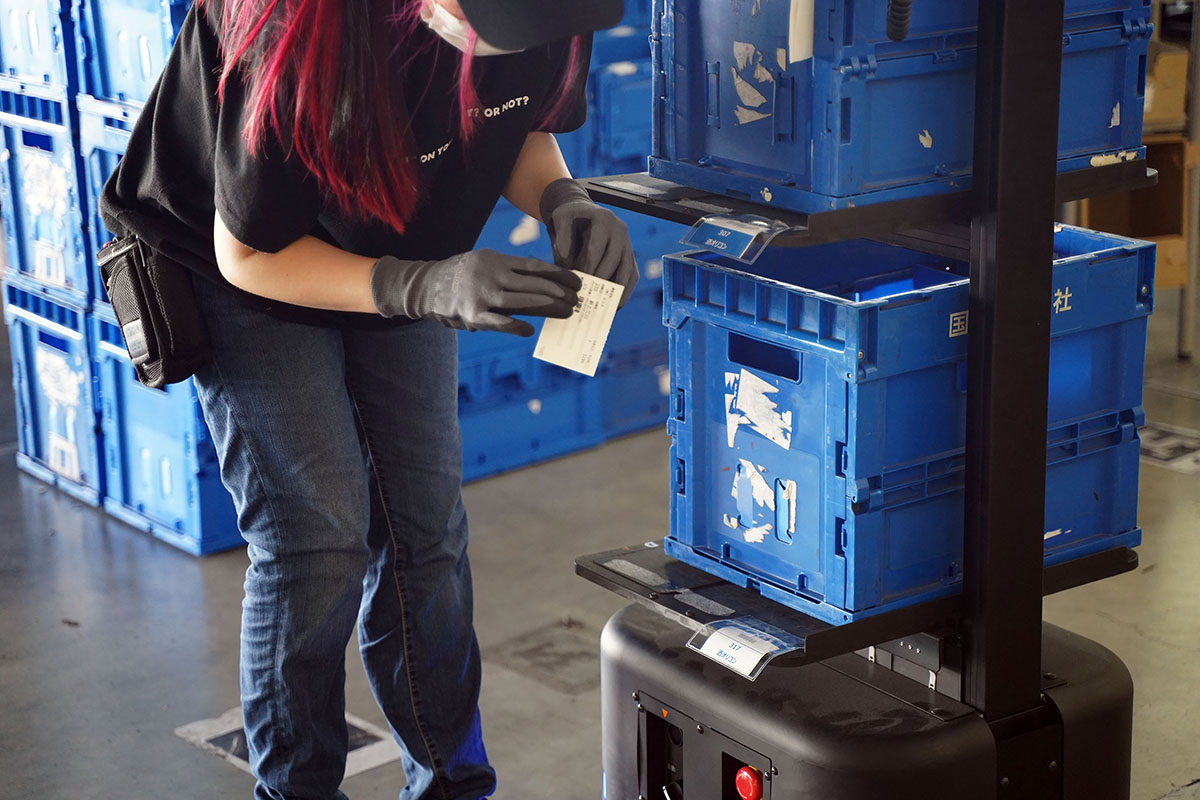
Q. Regarding the preparation for implementing Rapyuta PA-AMR, could you elaborate on any changes or adjustments made to operations and locations?
We began by selecting customers with the lead time, scale, and workload suitable for AMR operations. Ultimately, we narrowed down our focus to customers who predominantly shipped individual items and where we could anticipate a reduction in work time. Within our warehouse, we also adjusted the locations of target items to two specific areas.
Additionally, as we utilize AMRs not only for picking but also for conveying items to the shipping waiting area, there were concerns about potential collisions with forklifts during transport operations. To mitigate this risk, we installed signs and barricades along the AMR routes to enhance safety and ensure smoother loading operations.
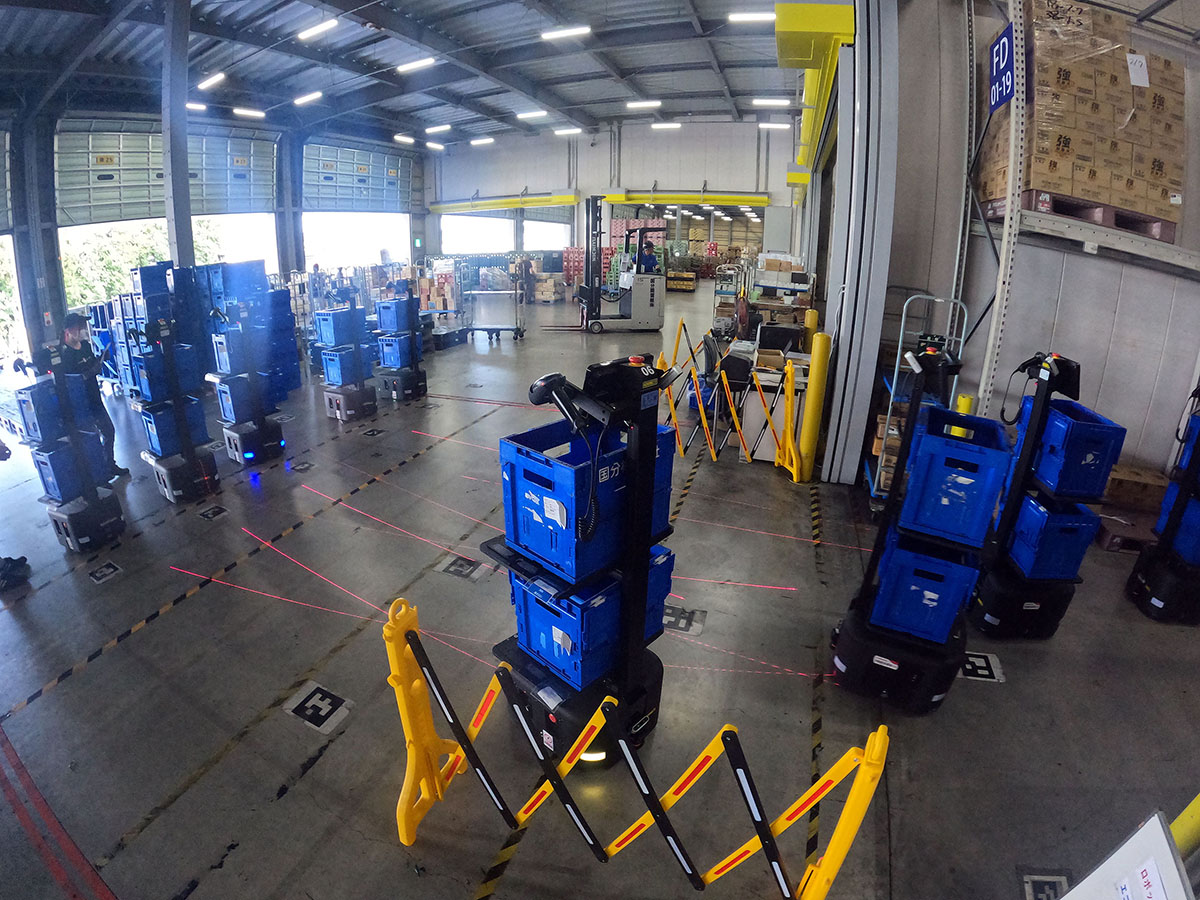
Q. Did the data integration with the WMS proceed smoothly?
Our previous WMS was only capable of sending batch instructions to external systems and did not support real-time data exchange. On the other hand, AMRs can operate independently without data integration or perform real-time data exchange at high frequencies. Considering future warehouse operations, we made modifications to the WMS to enable real-time data communication. Additionally, we established mechanisms within the WMS to collaborate with an external server (AWS) for data exchange.
Though it required time and trial and error, we believe that this major change in the distribution center’s system configuration was a big step forward for the future.
Q. Please share the results of the on-site acceptance of Rapyuta PA-AMR and any feedback from the field staff.
The feedback from our field staff has been positive, with many expressing that their daily tasks have become much easier. Initially, there was some skepticism, as there was an assumption that “robots = complicated,” but upon using them, they found the interface to be intuitive, quickly adapting to the new system. Prior to the AMR implementation, staff often juggled tasks with one hand while pulling a six-wheeled cart, but now, having both hands free has significantly improved work efficiency. This is particularly beneficial in a logistics center like ours, where a large portion of our shipments consists of individual items, making tasks such as unboxing much simpler. Additionally, the reduction in walking distances has notably decreased physical and mental strain.
Regarding the ratio of picking associates to the number of AMRs, we conducted several trials and currently maintain approximately three pickers for every ten Rapyuta PA-AMRs. Although at times the staff may feel a bit rushed by the AMRs arriving ahead of them, we believe this ratio strikes an appropriate balance for our logistics center.
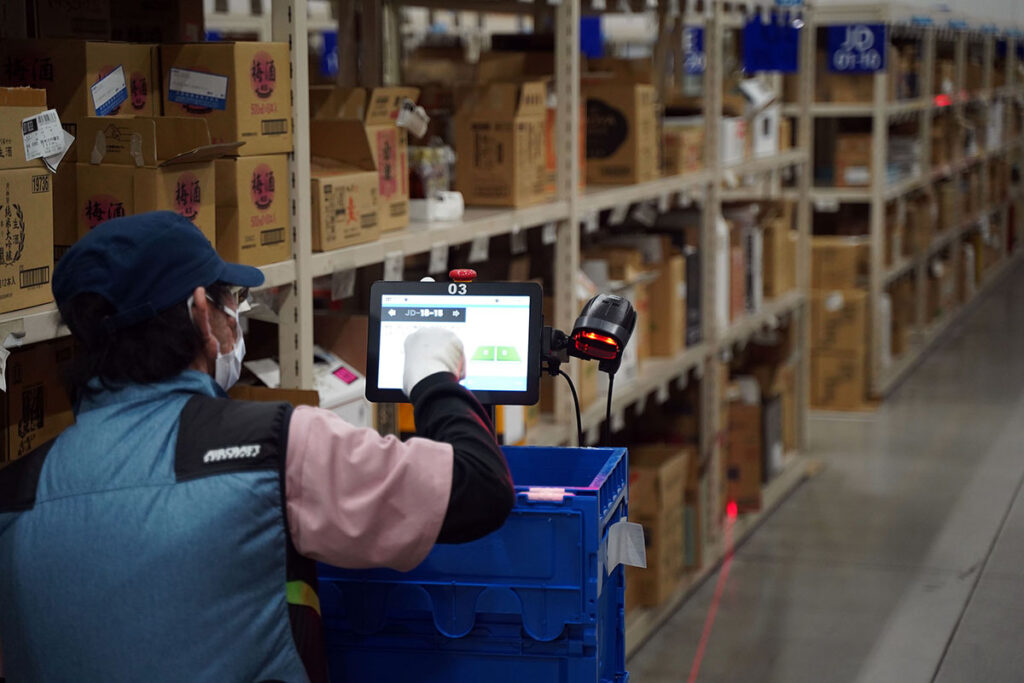
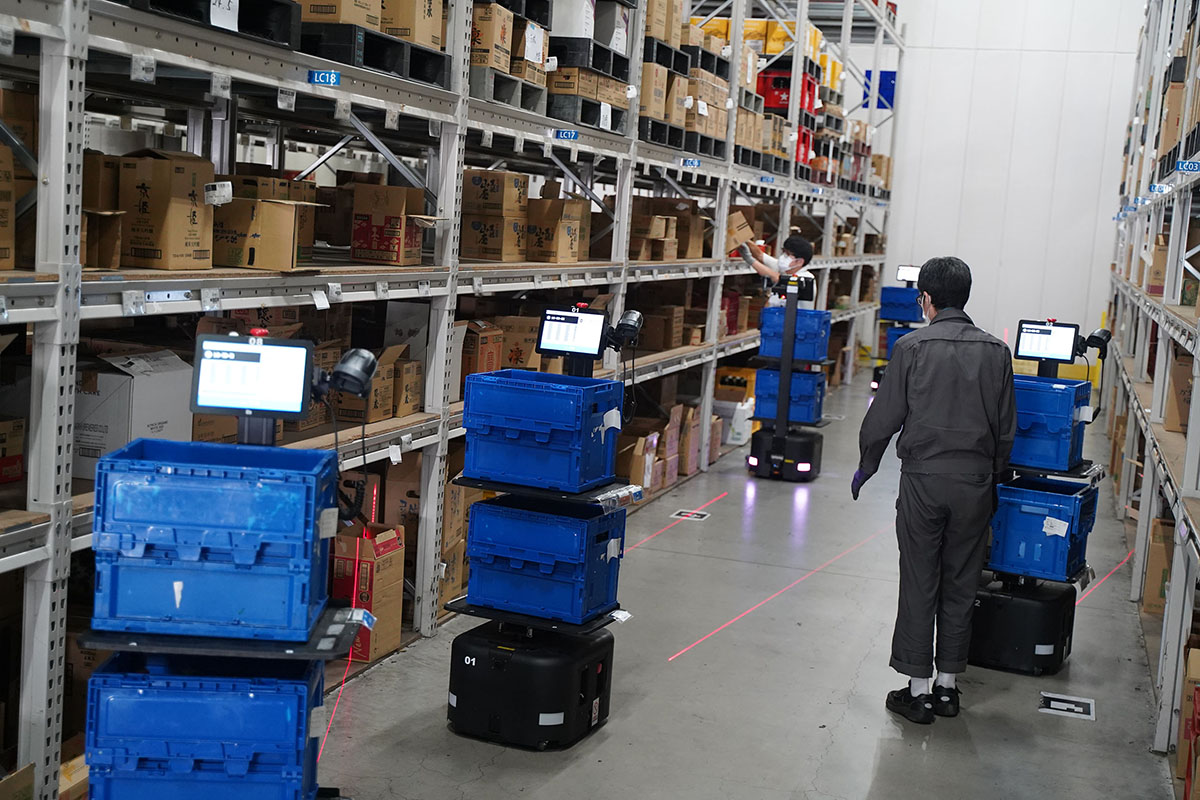
Q. Could you please explain how training was conducted for the on-site staff?
We started training a week before the actual operation began. Given the system’s user-friendly interface, we gave a quick 10-15 minute overview, and had the staff start picking to gain hands-on experience. One advantage of the simple operation is that even with a short initial training session, if any issues arise, the staff can help each other out on the spot. Impressively, both new and older staff members seemed to pick up the skills quite rapidly. Now, almost all staff members are proficient in operating the system.
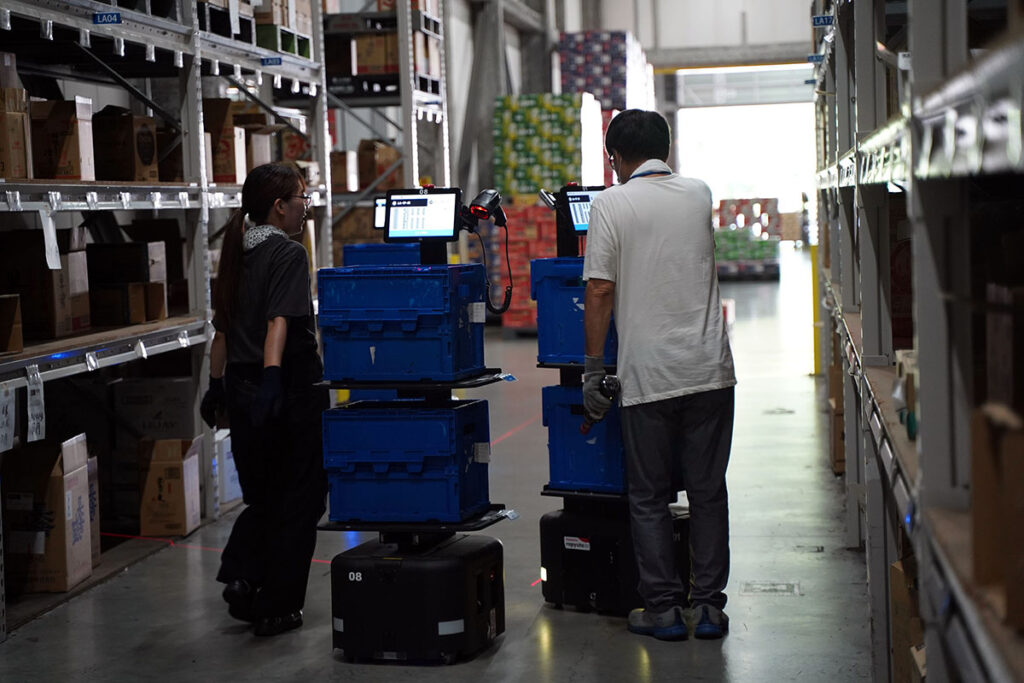
Q. Could you share any on-site solutions that have been integrated into operations since the implementation?
Since there are quite a few forklifts in operation at the site, our biggest concern was the potential conflict between forklifts and AMRs. To prevent collisions, we implemented measures such as barricades, signs, and traffic line organization to avoid overlap, ensuring forklift drivers could easily identify AMRs. Additionally, we installed lasers on the front of the AMRs to provide visual cues for operators when an AMR is approaching. While the introduction of AMRs initiated these efforts, organizing transport paths has ultimately contributed to the overall safety of warehouse operations.
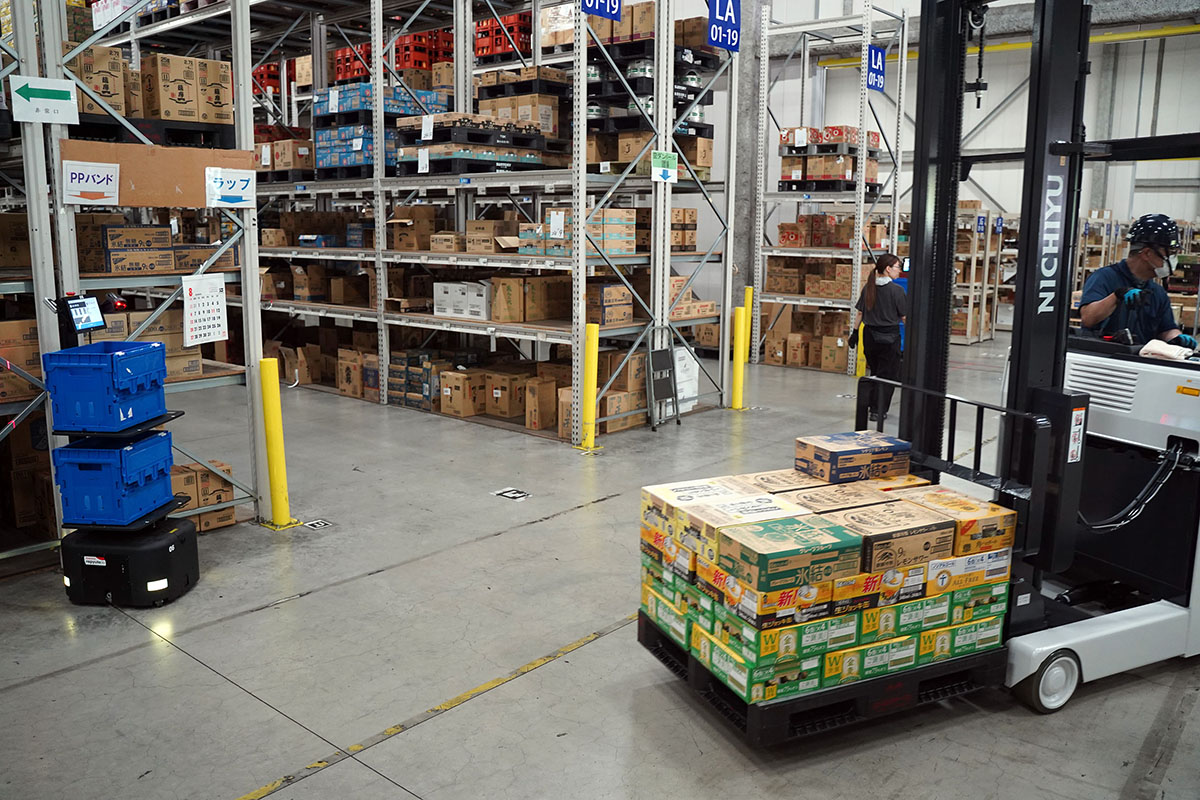
Q. What differences have been observed between the productivity levels from the pre-implementation simulations and those after the introduction of Rapyuta PA-AMR?
Our initial productivity goal for the first year after implementation was 90 to 100 lines per hour per person. Currently, we’re averaging around 80 lines per hour. Although we haven’t reached our productivity target for the first year yet, we’re seeing incremental progress, indicating further potential for improvement.
Moreover, upon analyzing productivity, we pinpointed areas where time losses occurred, notably during unloading and in congested transport lanes. To mitigate these issues, we’ve implemented on-site improvements, such as adding an extra transport lane to alleviate congestion.
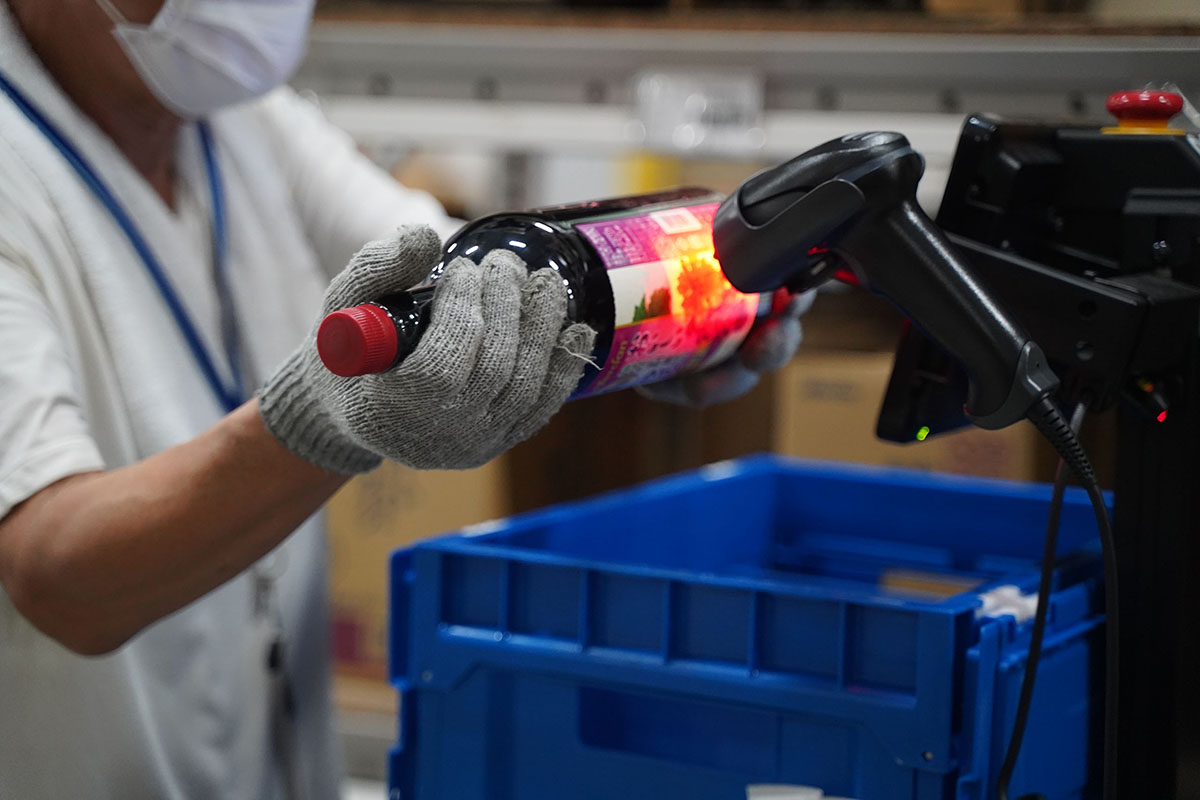
Q. What kind of support did you receive from Rapyuta Robotics?
Before the implementation, we had a dedicated Customer Success (CS) representative from Rapyuta Robotics who visited our site and provided meticulous support, handling everything from operational adjustments to error resolution. Even after the system was up and running, they continued to visit our site weekly, analyzing productivity and performance data, and proposing improvement strategies. This ongoing support was crucial for us, as it ensured smooth operations. Their commitment to accompanying us on this journey has been immensely valuable.
Q. How smooth was the entire Rapyuta PA-AMR implementation project and how was the cost performance as a result?
One of Rapyuta’s strengths was its ability to deliver swift implementations. However, adapting to the intricate demands of wholesale distribution posed some challenges, taking time both operationally and system-wise. However, Rapyuta Robotics showed remarkable persistence, addressing issues through trial and error. Consequently, we’ve established a foundation where AMRs can excel in wholesale distribution centers, marking a significant milestone.
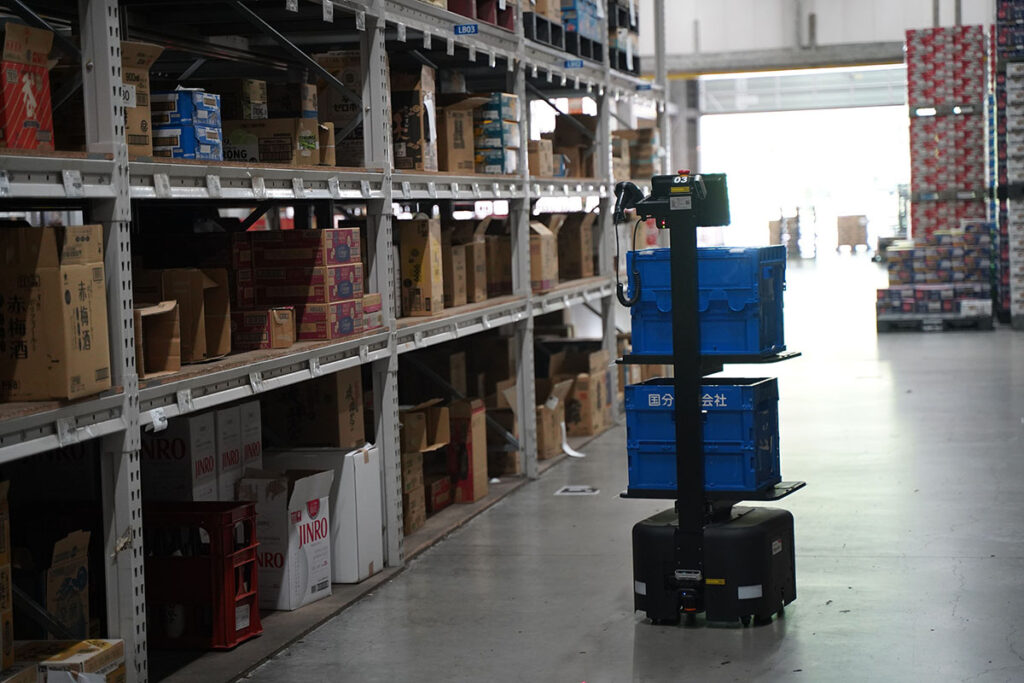
Q. Could you share any areas where you have expectations for Rapyuta PA-AMR in the future?
In our current setup, the AMR issues work instructions to picking operators without considering their locations. Going forward, if we can integrate location tracking for picking operators and tailor work instructions accordingly, we anticipate a reduction in AMR idle time and improved work efficiency. Additionally, we hope that after receiving daily work instruction data, the system can automatically determine the “optimal number” of workers for picking based on daily shipment volumes, enabling us to adjust staffing levels according to demand.
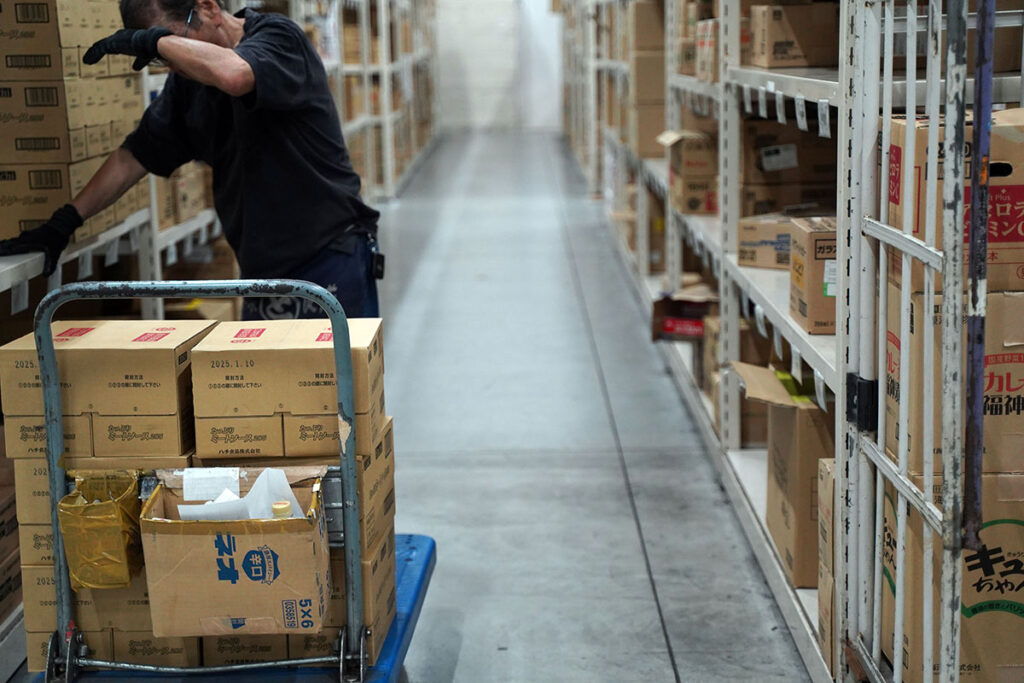
Q. In your experience with implementation, what kind of warehouse environment do you think is ideal for AMRs?
- Warehouses where large machinery installation is challenging, such as those already in operation.
- Warehouses with long lead times for operations and extended picking durations, such as those with nighttime operations, where picking times are longer.
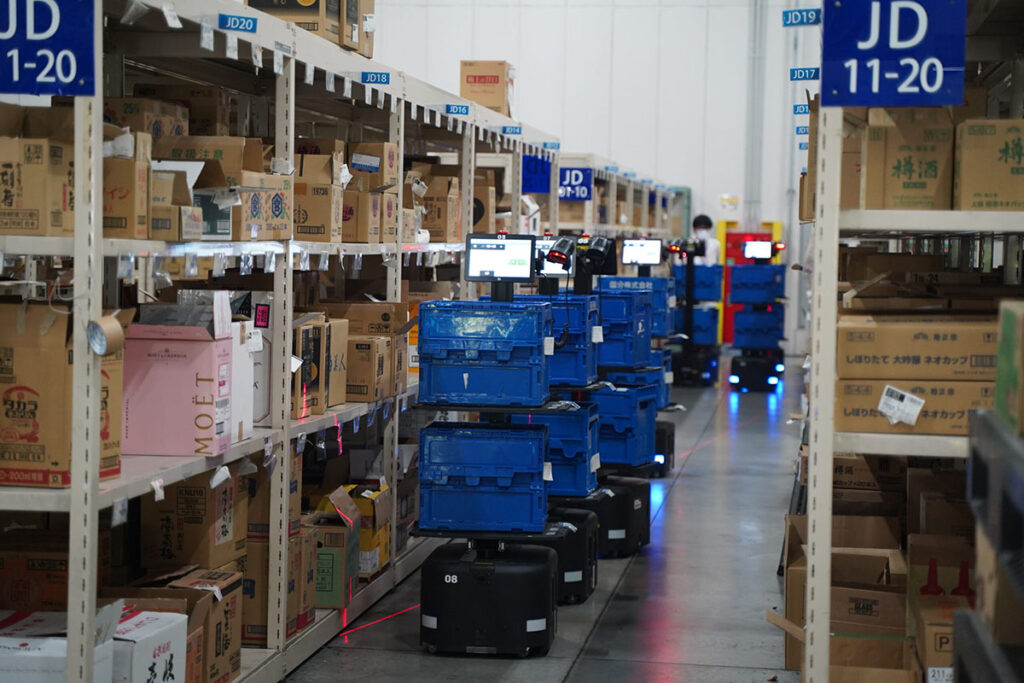
Q. Are there any plans to expand the implementation of AMRs to other locations in the future?
Given that AMRs were originally chosen because they align well with our centers in general, expanding the implementation was always part of our initial plan. Moving forward, we will evaluate the results of this implementation and consider introducing AMRs to other logistics centers.
